A women's hoodie is not only a modern but also a practical item. Sweatshirts and hoodies can be classified as to basic wardrobe elements - they are combined with skirts, trousers and even dresses of different cuts. Without having cutting skills, you can sew a sweatshirt with a zipper, pockets and a hood yourself using ready-made patterns.
Types of Women's Hoodies
Women's hoodie is a convenient option for sportswear. Fashion trends dictate their terms - a familiar thing, slightly modified, is given a new name.
Popular types of sweatshirts:
- Bomber. A kind of jacket-jacket. Many mistakenly call it a "windbreaker". Bombers are sewn from suede, knitwear and other dense fabrics. A mandatory condition is the presence of a rubberized sleeve and belt.
- Longsleeve. A modified T-shirt with long sleeves (sometimes three-quarters). The long sleeve does not have rubber inserts. The sleeve is finished with a flat overlock seam.
- Sweatshirt. Something between a shirt and a sweater. Sweatshirts are usually made of knitwear. Distinctive features include cuffs, raglan and a round collar. Sleeves can be trimmed with elastic.
- Hoodie. An elongated version of a sweatshirt. Many call this item a "kangaroo". Unlike a sweatshirt, a hoodie does not have a zipper. The sleeves are elasticated, there is a hood, and patch pockets.
Sweatshirts with a high, tubular collar are also hoodies.
Benefits of DIY Sewing
Anyone with even a vague idea of patterns can sew a sweatshirt on their own. There are many training videos on specialized forums that explain and clearly show the entire process step by step.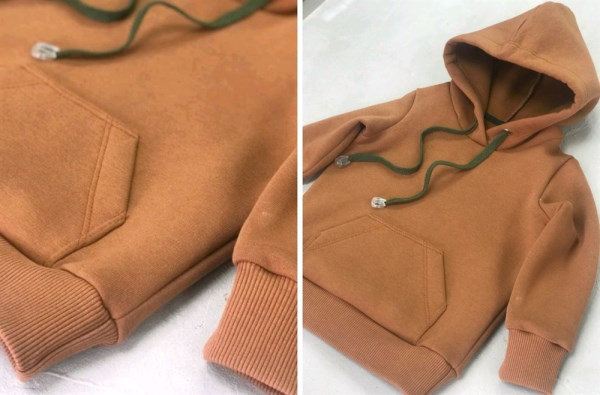
The advantages of self-sewing are considered to be:
- Opportunity to save money. Many stores sell clothes with a markup. If you have basic cutting skills, you can sew a sweatshirt yourself, spending only on fabric and fittings.
- Product size. A sweatshirt sewn by yourself will emphasize your figure and hide possible flaws. In this case, the item will fit perfectly.
- Fantasies come true. If you sew a sweatshirt or hoodie yourself, you can turn on your imagination and create a truly unique item. The product can be decorated with sequins, beads, metal buttons, rhinestones, if desired.
The advantages of self-sewing also include the ability to choose fabric depending on your own preferences or price.
Choice of style and fabric, fashionable colors in 2021
A women's hoodie is suitable for everyday wear. It can also be used to create a festive, slightly romantic look.
The following styles and colors are considered fashionable in 2021:
| Materials and images | Types | Characteristics |
| Styles | Shortened | This option is suitable for bold, slender girls. A tight or loose sweatshirt will slightly reveal the belly. They are usually worn in the warm season. |
| Long | Most often, sweatshirts of this type are worn with over-the-knee boots or a skirt. They usually have a hood with drawstrings, long sleeves and pockets. Such sweatshirts can also be worn with jeans. | |
| Insulated | A popular sports "snowboarding" option. The sweatshirt has a double hood (usually without drawstrings). The cut is loose, the item does not cling to the figure. | |
| With lightning | The sweatshirt vaguely resembles a windbreaker. The model is suitable for everyday wear. Usually, such sweatshirts have large roomy pockets, a hood with drawstrings and an extended sleeve. | |
| Oversized | This model does not necessarily have to hide figure imperfections. Hyperoversize or oversize is a fashion trend of 2021. You can wear a sweatshirt with a skirt or dress. | |
| Textile | Microfiber | Semi-synthetic fabric made of polyester and polyamide. The material is hypoallergenic and does not cause irritation. The skin breathes under it. It does not lose its shape and color for a long time even after regular washing. A significant drawback is that microfiber will attract dust microparticles. |
| Kapitonius | Hypoallergenic material made of polyester and cotton. Children and pregnant women can wear capitonium sweatshirts. They are highly wear-resistant and dense. They retain heat well. The fabric has a "carriage" pattern formed by the tightening of insulation and cotton. | |
| Cashcorse | In addition to cotton, the composition includes synthetics and viscose. The material itself is quite durable and wear-resistant. It conducts air well and retains heat. The material wrinkles quickly. | |
| Ribana | A combination of polyester, lycra and cotton. The fabric is elastic, but does not stretch much. Significant disadvantages include the possibility of rapid fading in the sun. Allows air to pass through, retains heat. Does not cause allergies. | |
| Fleece | Soft, warm material. Composition: lycra, spandex, polyester (or polyester), knitwear. Thermal conductivity is maintained even if the sweatshirt is wet. Air permeability is high. The material does not wrinkle, but is highly electrified. | |
| Footer | Durable, elastic, soft, heat-conducting, breathable material. Completely hypoallergenic. Fades quickly in the sun. It is strictly forbidden to wash footer in hot water. | |
| Colors | Shades of gray | Light gray, silver, dark gray, platinum, charcoal, marengo, gray-blue, dove gray. |
| Shades of green | Light green, apple, green, olive, pistachio, mint, malachite, emerald, jade, dark turquoise, dark green, dark olive. | |
| Shades of yellow | Champagne, fawn, mustard, amber, straw, sand, apricot, honey, golden, yellow-brown, vanilla, orange. | |
| Shades of red | Coral, scarlet, scarlet, amaranth, raspberry, crimson, burgundy, tomato, ruby, pink, light pink, salmon. | |
| Shades of blue | Dark blue, ultramarine, indigo, jet black, blue-green, turquoise, sapphire, cobalt, denim, cornflower blue, sky blue. |
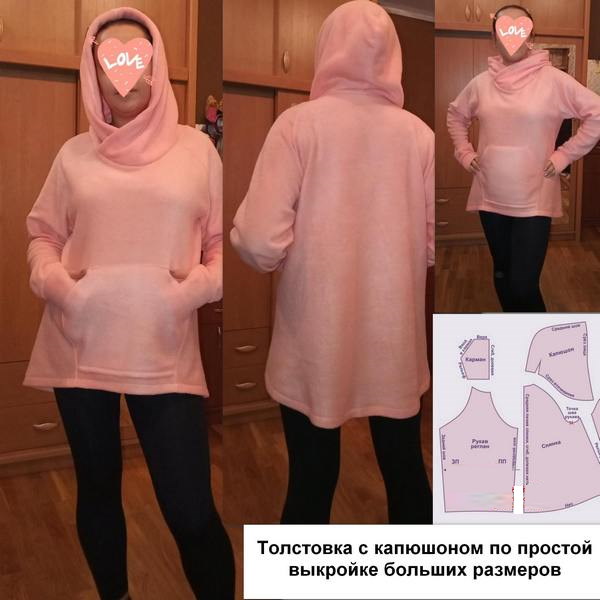 Of course, neutral black will always be in trend. To add brightness to the image, you can decorate the sweatshirt with multi-colored embroidery, sequins or rhinestones. They will look good on a black background.
Of course, neutral black will always be in trend. To add brightness to the image, you can decorate the sweatshirt with multi-colored embroidery, sequins or rhinestones. They will look good on a black background.
Master class on sewing a sweatshirt with a hood and a zipper with side pockets
You can sew a women's hoodie yourself, having ready-made patterns at hand. You can download them from specialized sites. You can experiment with ready-made patterns, choosing the shape of the hood or neck.
Taking measurements
To take measurements, you need to arm yourself with a tailor's tape measure.
Before sewing a sweatshirt, measure:
- sleeve (from shoulder to wrist);
- breast;
- waist.
If you plan to sew a long sweatshirt, you will need to additionally measure the hip circumference. If you plan to wear the hoodie under a T-shirt or a thin sweater, you will need to add 1-2 cm to the obtained values. This way, the sweatshirt will fit loosely.
Modeling the finished pattern
The pattern includes the following components:
- pockets;
- hood;
- neck (deepened);
- neckline (classic) with hood;
- non-stop tapered sleeve;
- sleeve without stop with cuff;
- back and shelf.

If you plan to make a sweatshirt with a large, deep hood, then choose a deep neck. A cuff (rubber insert) on the sleeve is more suitable for a hoodie or sweatshirt.
You can calculate the width of the pattern yourself, taking into account the chest volume. To make the sweatshirt fit loosely, you need to divide the half-girth (for example, 86 cm) by 2 and add 3-4 cm to the resulting value.
Cutting out the fabric
Experts recommend sewing sweatshirts from elastic fabrics. The material is usually taken with a reserve. For a women's sweatshirt, a piece 190 cm wide will be enough. The length directly depends on the type of product. The pattern parts are placed on the fabric and outlined with chalk. The details are carefully cut out with scissors.
You should get:
- hood – 2 parts;
- sleeve – 2 pieces;
- pocket – 2 parts;
- back – 1 piece;
- knitted elastic band – 3 pieces (for the waistband and sleeves);
- pocket trim – 4 pieces;
- shelf insert – 4 parts.
Details after all parts of the future sweatshirt have been cut out, they need to be sewn together with an overlock. Iron the seams.
Sewing a hood
Before you start sewing the hood, you need to take measurements of your head.
To do this you need:
- visually place a dot in the center on the right side of the neck;
- apply a tape measure to it;
- wrap the ribbon around your neck;
- write down the obtained value.
Also measure the distance from temple to temple, applying a tailor's tape measure at the back. To make the hood "sit" freely, add 6-8 cm to the obtained values. You should get 2 patterns. Separately cut out the shelves, leaving a little space for folds.
Cuff of the bottom and sleeves
Sewing the cuffs to the waistband and sleeves is quite simple. The rubberized fabric must be divided into 3 parts. Then marks are put on them, inserted into the sleeve so that the seams are aligned with each other. Allowances are laid out to the right and left, slightly shifting them if necessary. The cuff is sewn, trying to stretch the cut. The waistband is sewn in the same way. Then the sweatshirt is turned inside out. Preliminary, the seams must be ironed.
Lightning
A women's hoodie can be decorated with a zipper or a pattern. Everyone decorates products depending on their own preferences. Sewing a zipper on a sweatshirt is quite simple.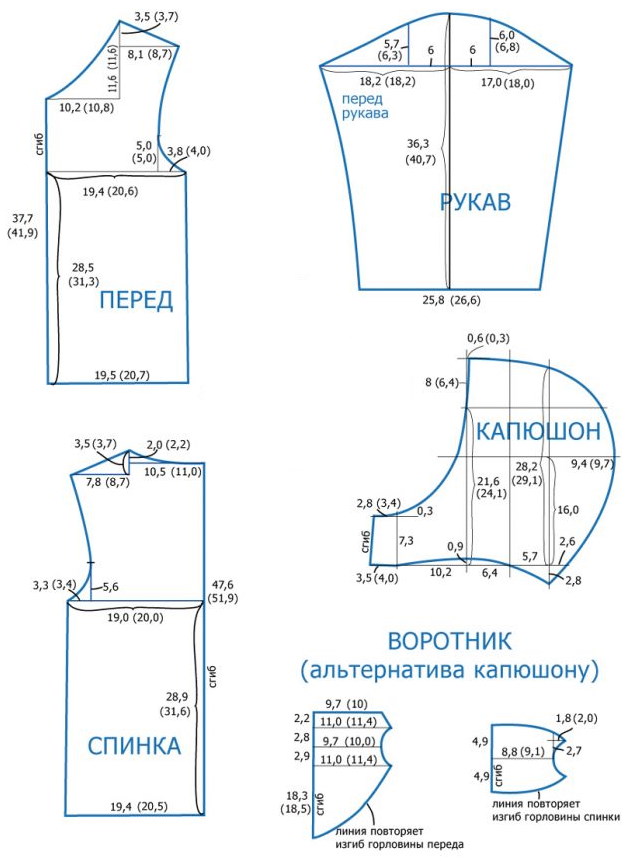
It is enough to perform a few simple steps:
- draw a straight dotted line in the center of the item with a black marker (provided that the fabric is light);
- the sweatshirt is cut straight along the line;
- the zipper is opened, dividing it into 2 parts;
- the right part is moved to the right side, the left part to the left.
If necessary, the edges of the zipper are trimmed. To prevent the zipper from shifting during sewing, it is pinned. The edges of the zipper and fabric are carefully sewn together. At the final stage, the seams are ironed and the finished product is turned inside out.
Pick-ups
The facings are necessary for secure fastening of the fastener. They are usually made from a strip of fabric folded in half. For a sweatshirt, a full-length facing is suitable.
Cotton tape
The cotton tape is sewn on the inside of the sweatshirt (from the back) in the center. This is necessary to maintain the shape of the hoodie. With the cotton tape, the sweatshirt will not stretch much.
Pockets
Sweatshirts usually have kangaroo pockets sewn onto them.
You will need:
- sewing needle for knitwear;
- winding threads of different colors;
- sewing twin needle;
- plain threads;
- interlining.
The pocket should be modeled in advance. The pattern is applied to the front side of the shelf. The adhesive tape is attached to the pocket and the strip is ironed. The procedure is carried out on the left and right sides. The strip needs to be given time to cool. The open cut is overlocked along the perimeter and slightly folded back. Once again, go over the pocket entrances. On the right and left sides, you need to topstitch with a double needle. The tape is removed, slightly folded back the allowances. At the final stage, you need to stitch a straight "kangaroo" stitch to the sweatshirt, retreating 1 mm. The pocket is ironed.
Ironing
The product must be ironed on both sides. Go over the seams several times with a hot iron. This is necessary so that the fabric on the body does not stick out and the seams do not stick out. Ironing the sweatshirt from the front side is also mandatory.
Models of fashionable women's sweatshirts with a hood. Description of sewing, construction of a pattern
A women's hoodie may not have a zipper or pockets. Sewing a hoodie using the technique may differ slightly from the algorithm for making a hoodie, sweatshirt, or bomber jacket. Using the instructions below, you can also sew a warm hoodie with fur or lining.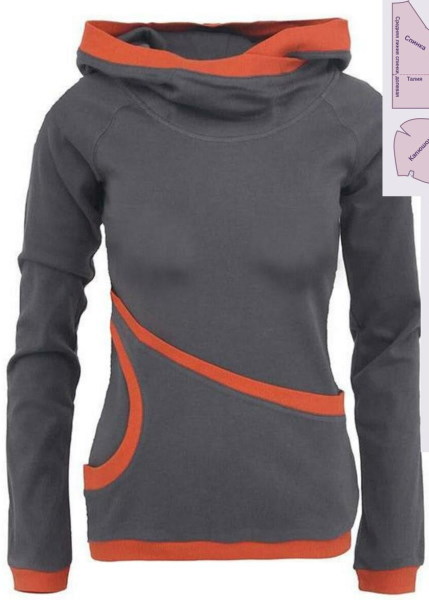
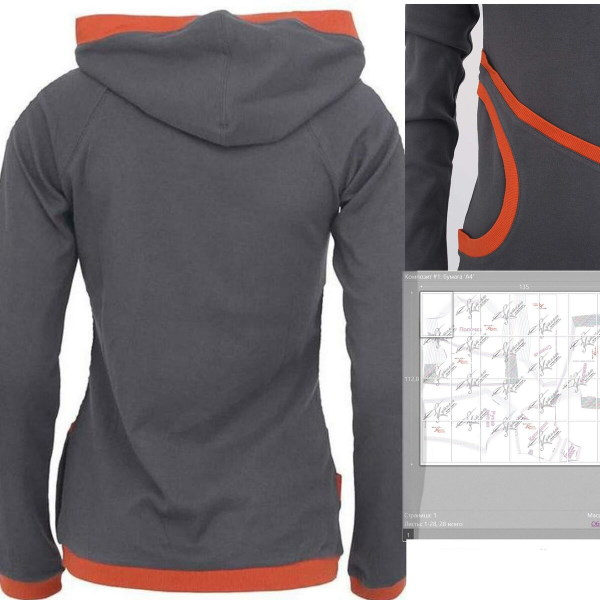
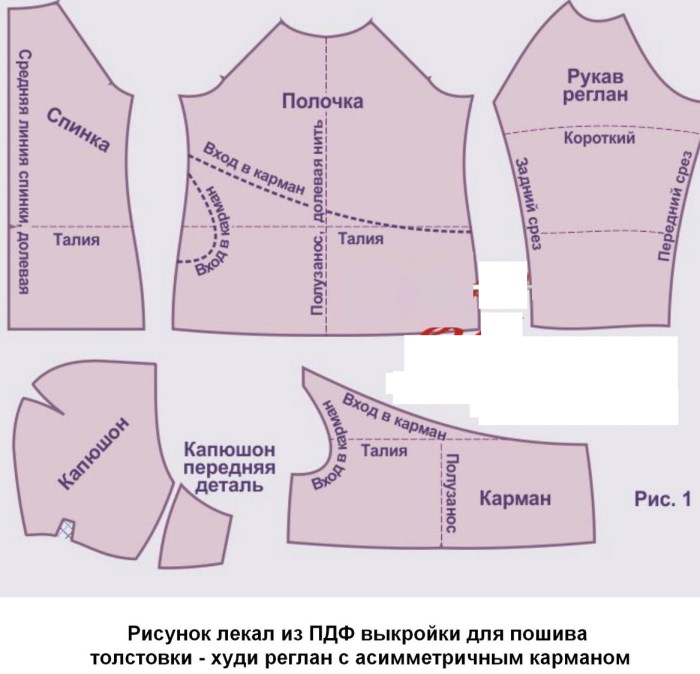
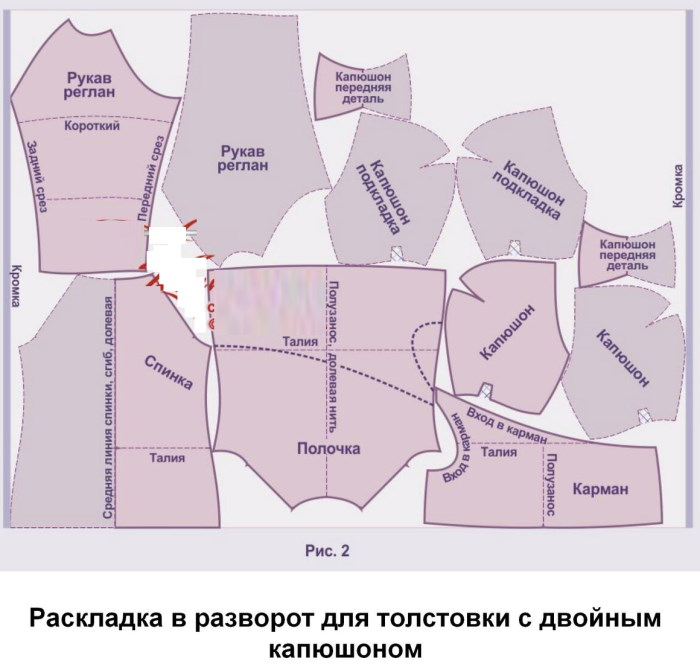
To sew the product you will need:
- piece of fabric;
- ruler;
- pattern;
- thick cardboard;
- pins, tailor's, sewing needles;
- scissors;
- overlock, sewing machine.
You should also have cotton ribbons on hand.
Hoodie
First of all, you need to decide on the material. For sewing a hoodie, use footer or fleece. In the process of creating the product, it is important to follow the rules for working with knitwear. The material should not stretch in length.
The finished pattern can be downloaded from a specialized website and printed on paper. It is advisable to make patterns in natural size. To do this, the drawings are transferred to a sheet of Whatman paper.
You should get the following parts:
- cuffs – 2 pcs.;
- belt – 1 pc.;
- hood - 3 parts (middle, sides);
- sleeves – 2 pcs.;
- shelves - 1 pc.;
- folds – 2 pcs.;
- back - 1 pc.
The back and the front are first sewn together along the shoulder cuts. It is advisable to use a four-thread overlock. The sleeves are connected to the back parts of the sweatshirt with threads. The mitten side cuts are swept. The hood parts are connected to each other by sewing the 2 side ones to the middle (a mini-drape should form).
The edges of the future hood are placed on top of each other and carefully sewn to the neck. The cuffs are sewn to the sleeves and belt according to the above-described pattern. The seams are ironed. The overlock stitches are carefully tucked inside.
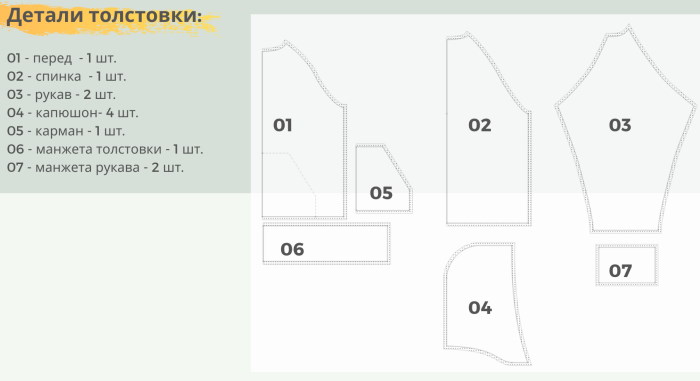

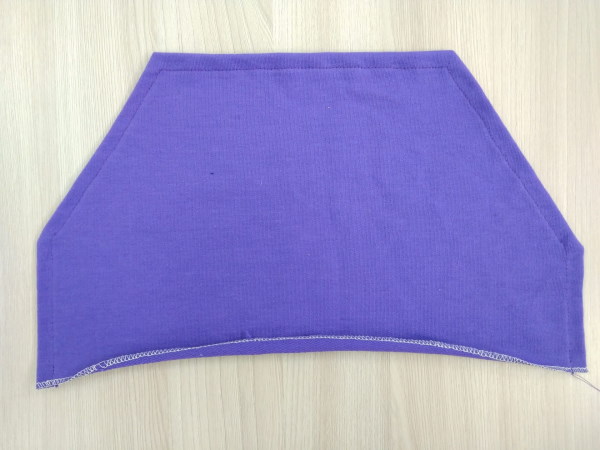
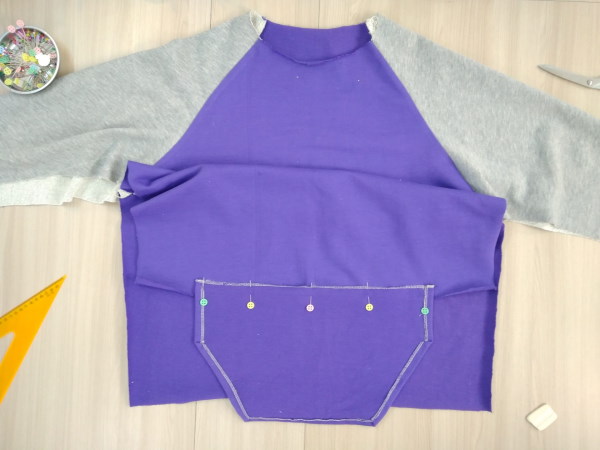

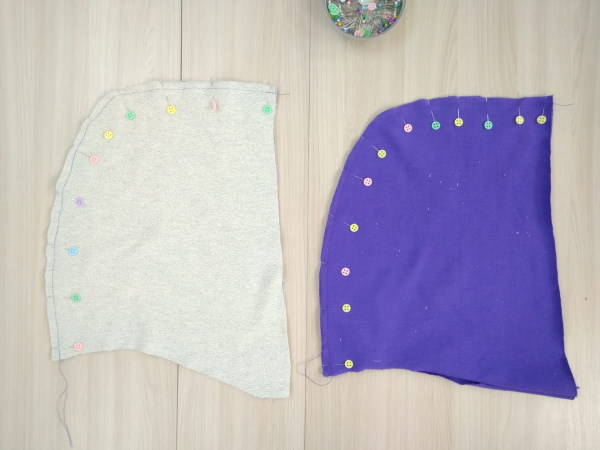
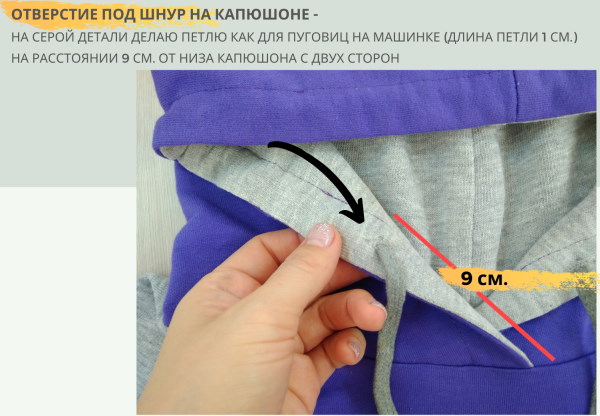

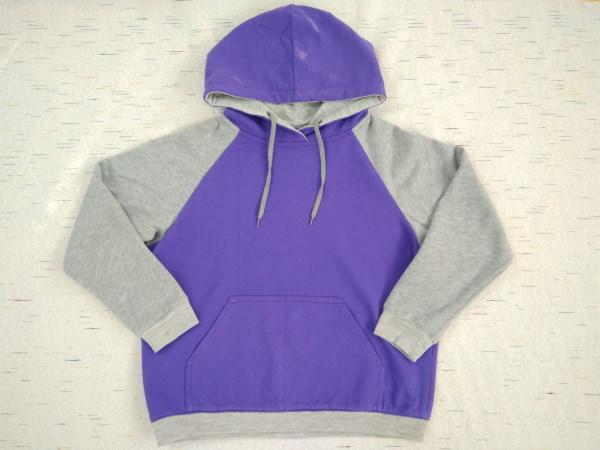
Finished hoodies can be steamed or simply ironed. A cotton ribbon or cord is threaded through the drawstring at the final stage.
Sweatshirt
It is also preferable to sew a sweatshirt from elastic but durable fabric.
You should have the following on hand:
- pins;
- tailor's tape;
- threads;
- needles;
- sewing machine;
- overlock;
- sharp scissors.
You can start cutting the fabric without a pattern. To do this, fold the piece of fabric in half and model the sleeves, front, and back. To form a raglan, fold the sleeve in half and place the piece on the main part of the sweatshirt. Fold the back lengthwise, cut off the armhole on the opposite side. The same steps must be repeated to model the second sleeve.
The cuffs are cut from decorative knitwear. The width is chosen based on personal preferences. The cuffs are slightly narrowed and sewn to the sleeve. The neckline and waistband of the sweatshirt are designed separately. The top and bottom need to be trimmed, the cuff inserted into them and the edges sewn. If desired, the neckline of the sweatshirt can be designed in the shape of the letter V.
Bomber jacket
The algorithm for sewing a bomber jacket is slightly different from the technique for making sweatshirts. First, the pattern needs to be transferred to the fabric, then the material needs to be cut out, the fittings and other necessary materials need to be prepared. The back and shelves are initially removed to the side. The pocket burlaps are applied to the shelves and sewn together (front side to front side).
The front piece is applied to the back piece and the parts are connected. The side seams need to be stitched slightly above and slightly below the sacks. The gaps are ironed with a hot iron. The pockets are placed on the front piece. The sleeves are connected to each other in the standard way, starting from the bottom. The allowances are ironed. The sleeve is threaded through the armhole of the bomber jacket, straightened and sewn on a machine (straight line, no more than 2.5 mm stitch).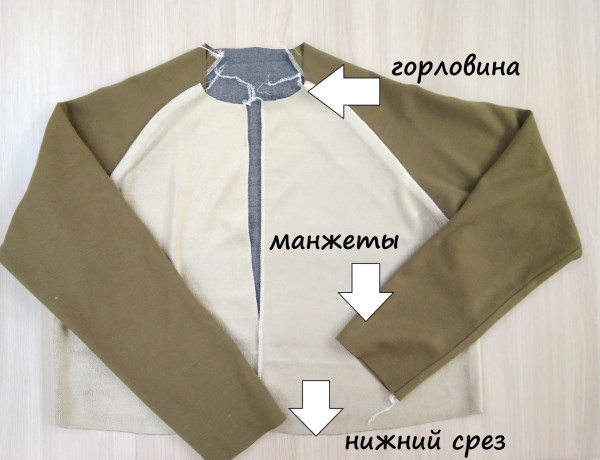
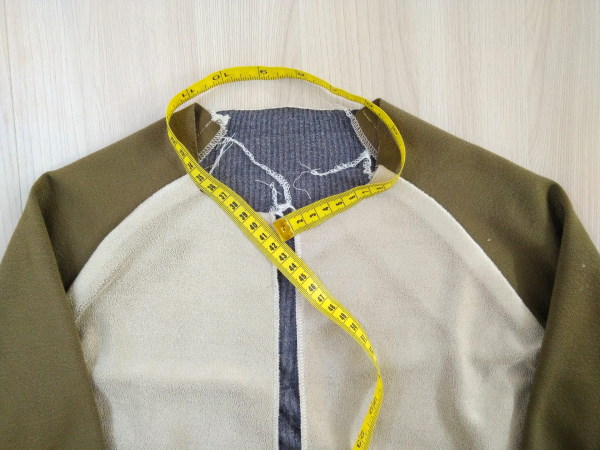
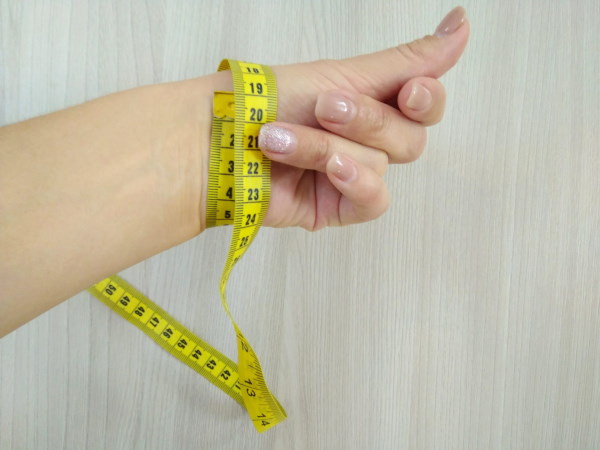
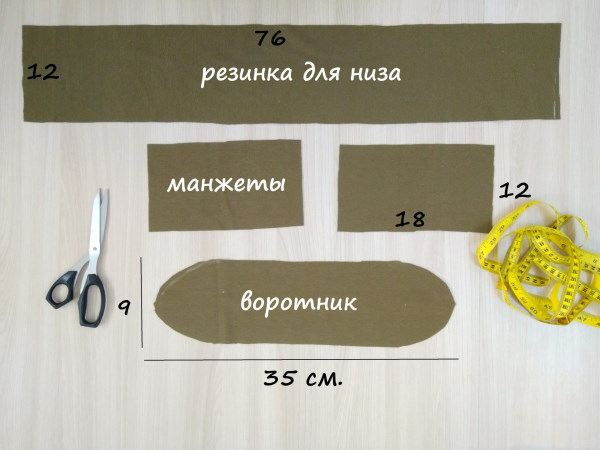
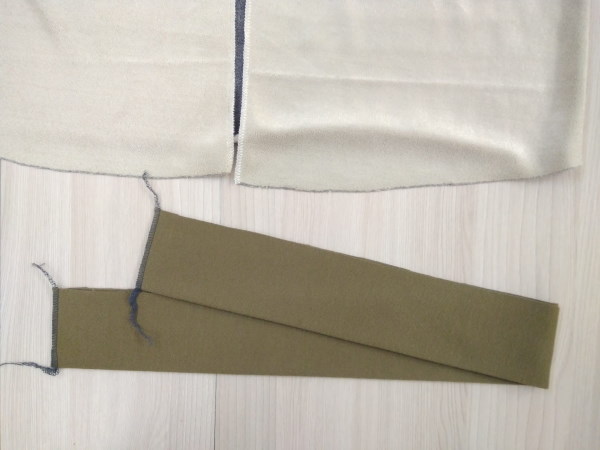
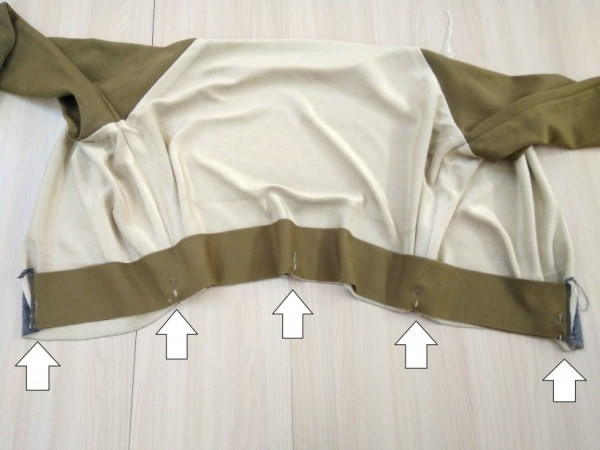
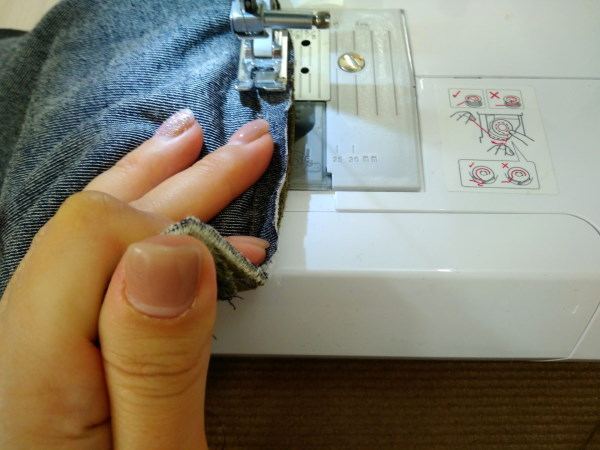
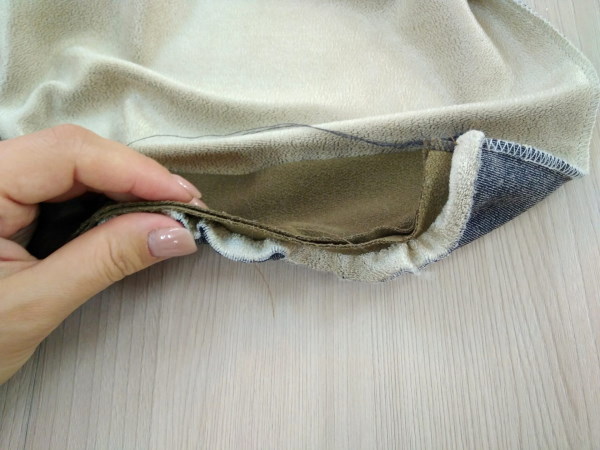
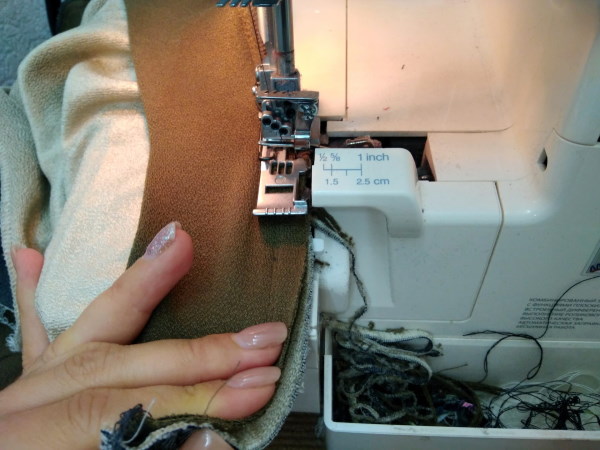
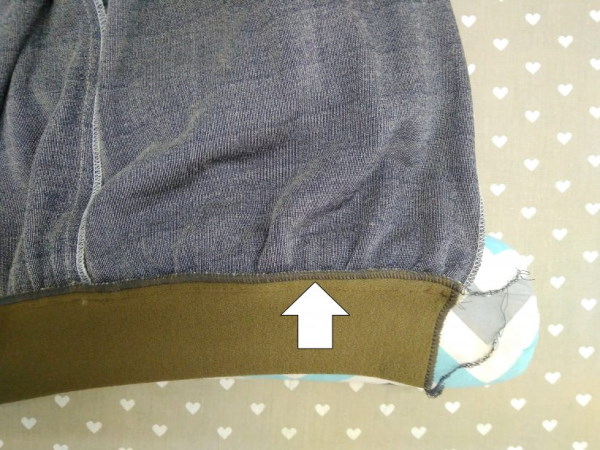
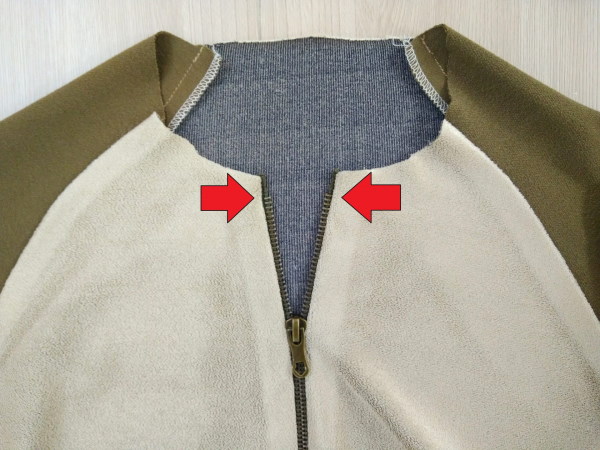

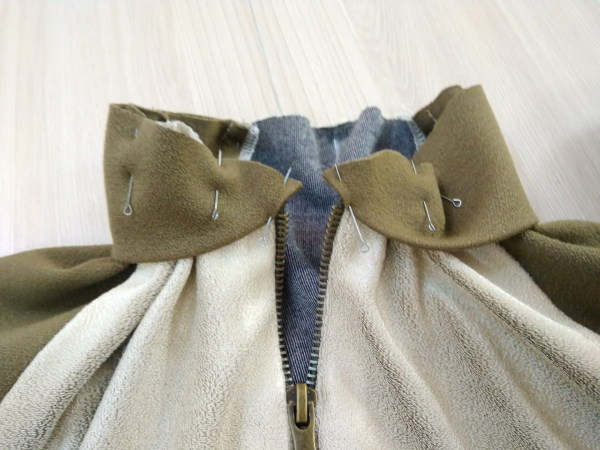
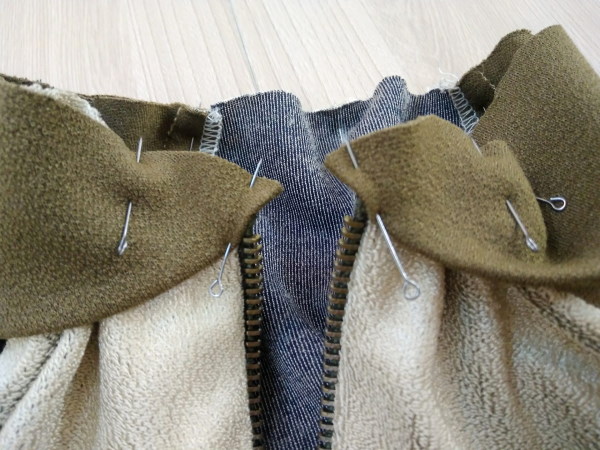
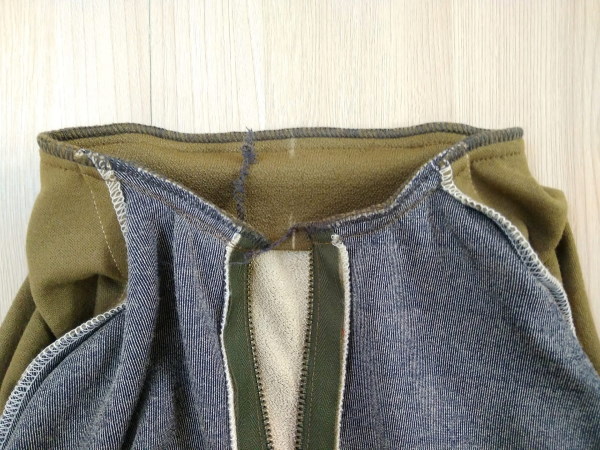
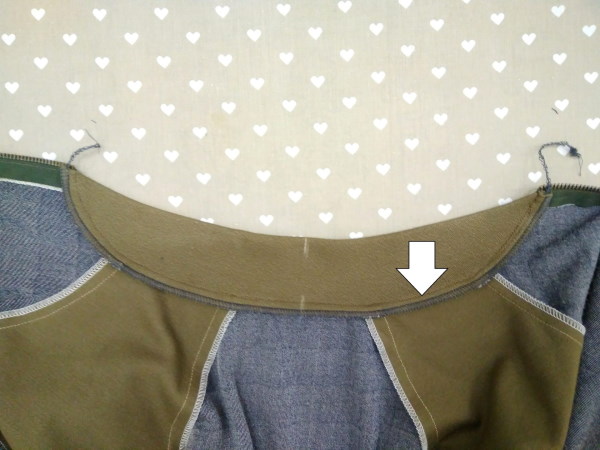
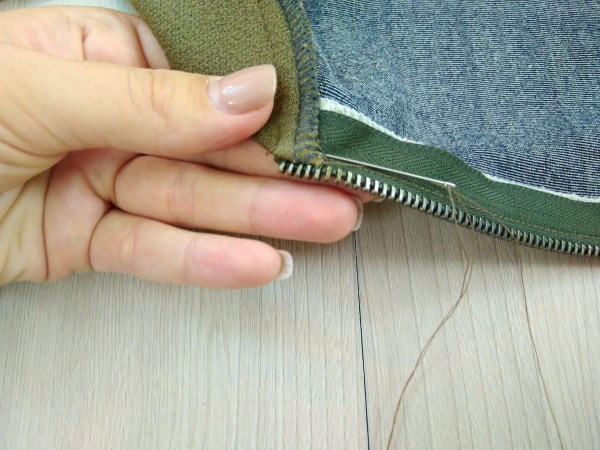
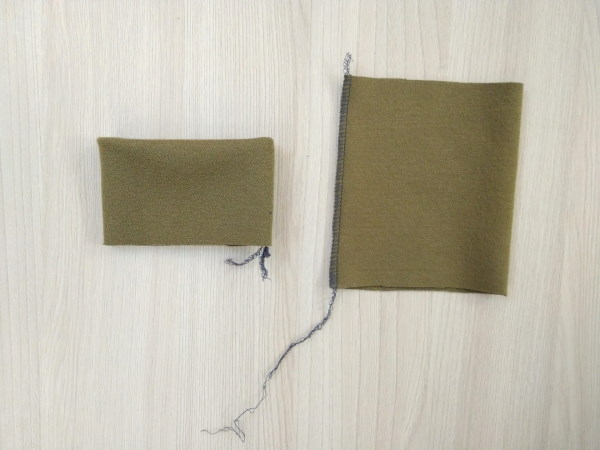


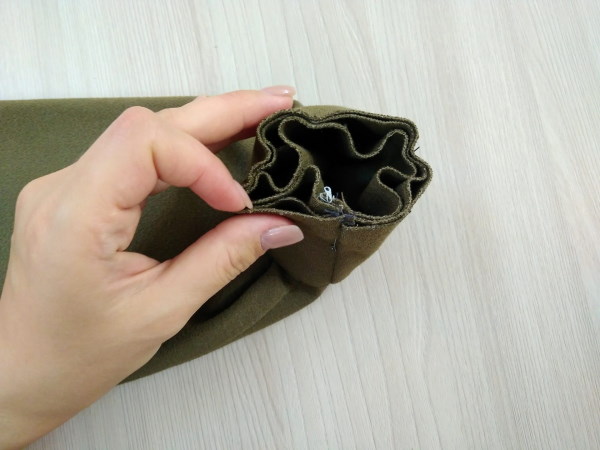
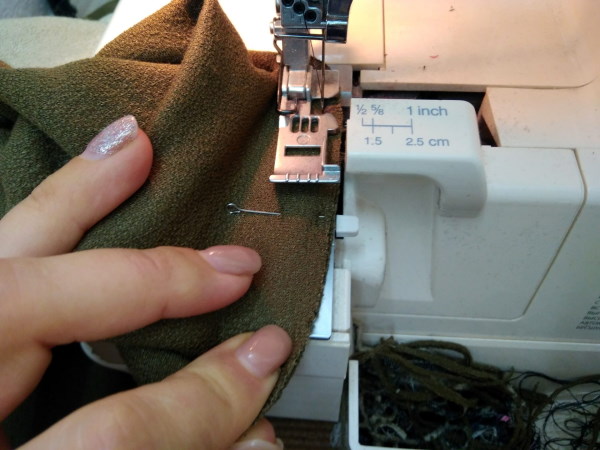
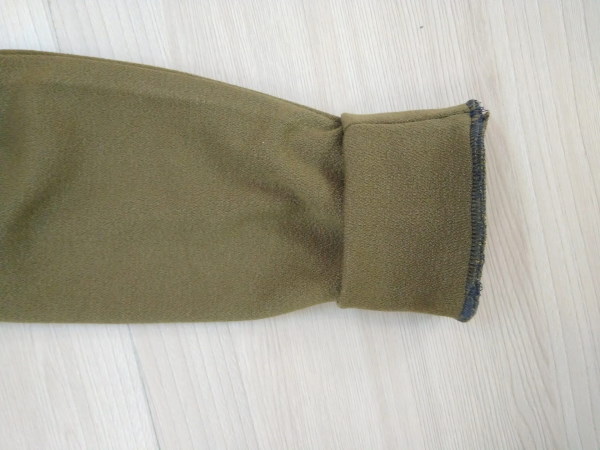
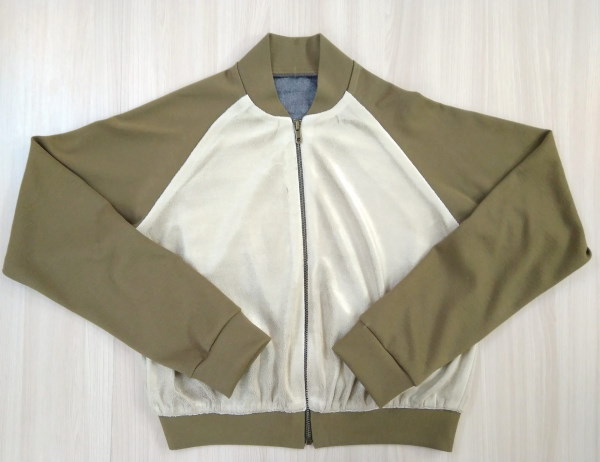
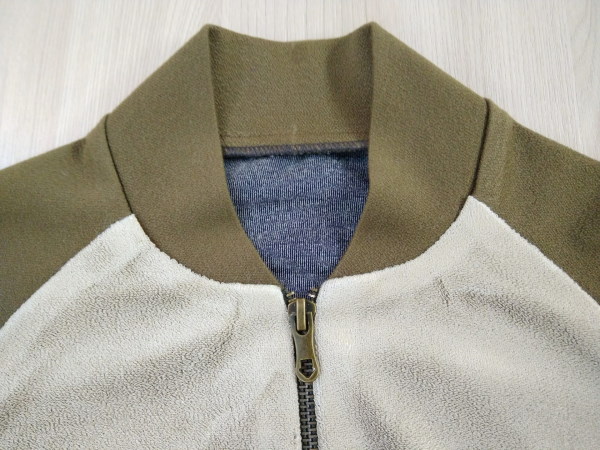
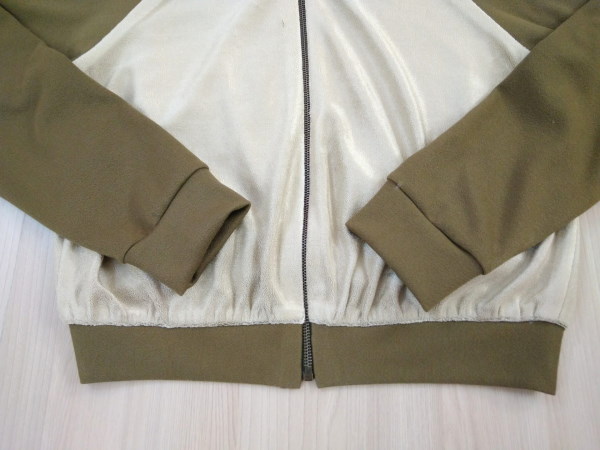
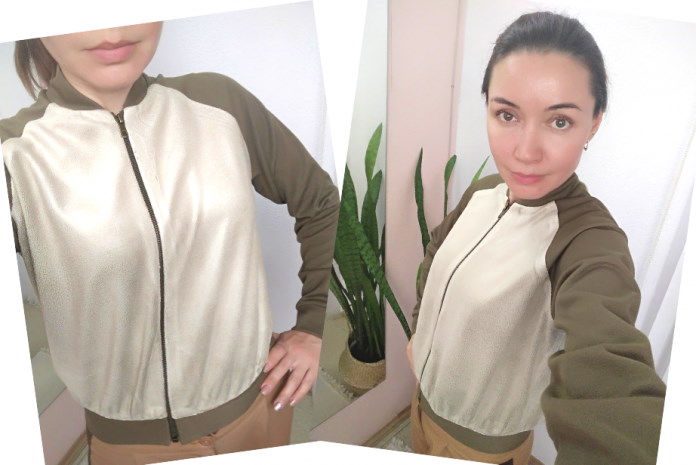
The bomber jacket usually comes with a lining, so the back, front, sleeves and waist are cut out of thin, breathable fabric. The lining is usually glued to the jacket using a steam generator or an iron. The fronts sewn to the back already form the bomber jacket. After all the parts have been connected to each other, you can start to design the waist and sleeves. The elastic fabric is sewn to the bottom of the bomber jacket using a standard pattern. Each seam should be ironed.
Long model
Long sweatshirts with a hood are sewn according to a standard pattern. First, you need to cut out the fabric. To do this, transfer the pattern to the material, outline the parts with chalk and carefully cut out with scissors. The length of the front and back should be 60-90 cm (depending on preferences). The width of the knitted elastic bands used to decorate the belt and cuffs can be determined directly by the hand.
First, sew the front, back, sleeves and hood. All the details of the future sweatshirt are connected by sewing on a machine. The hood can be designed as you wish. If the drawstring was left, then a ribbon or cord is threaded through it. A long sweatshirt can be made slightly fitted. A zipper is usually not sewn into this model.
Insulated fleece sweatshirt
Fleece sweatshirts can be worn in winter and autumn. It is quite easy to sew the product yourself. Before you start sewing, you need to take measurements, model the pattern and cut the fabric correctly. Fleece sweatshirts may not have a hood, so the height of the neck inserts 8-10 cm.
The top of the sweatshirt is trimmed and they begin to overcast the back and shoulder seams. A strip of fabric is sewn to the top of the shelves, which will later turn into a neck. The front part of the future sweatshirt is connected to the back. It is necessary to remember that each time the allowances are turned down and only then sewn.
The sleeve parts are connected to each other, the cuffs are modeled. By threading them through the armholes, the sleeves are connected to the main part of the sweatshirt. Usually, such models have a sewn-in zipper. As a rule, it reaches the end of the neck. You can experiment a little and sew in a long lock. The finished product is ironed from the inside out and turned to the front side.
Warm sweatshirt with fur
A women's hoodie can be insulated. There are no special differences in technique. You can simply sew a sweatshirt from fleece fabric. Or trim the hood with fur. After the patterns have been transferred to the fabric, you need to carefully cut out the details and start modeling the sweatshirt.
The hood and sleeve parts are sewn first. To speed up the process, you can also model the cuffs at once. The fronts are sewn to the back, the sleeves, neck and hood are sewn on. You can sew in a zipper and a pocket. The seams are steamed or ironed.
Decorating techniques
There are many options for decorating self-sewn sweatshirts. Prints (animalistic, floral, ethnic), patterns of rhinestones or sequins are popular. People who are professional athletes or support a certain team can depict the emblem of a particular game club on the fabric. Embroidery, neon inscriptions and even photographs look good on sweatshirts.
Women's sweatshirts with a hood or zipper do not necessarily emphasize the sporty style. Hoodies, sweatshirts are suitable even for special occasions. Fashion dictates its own rules, so for "going out" many girls successfully combine sweatshirts with skirts and dresses.
Video about sewing a hoodie
How to sew a sweatshirt with a hood and a zipper:
